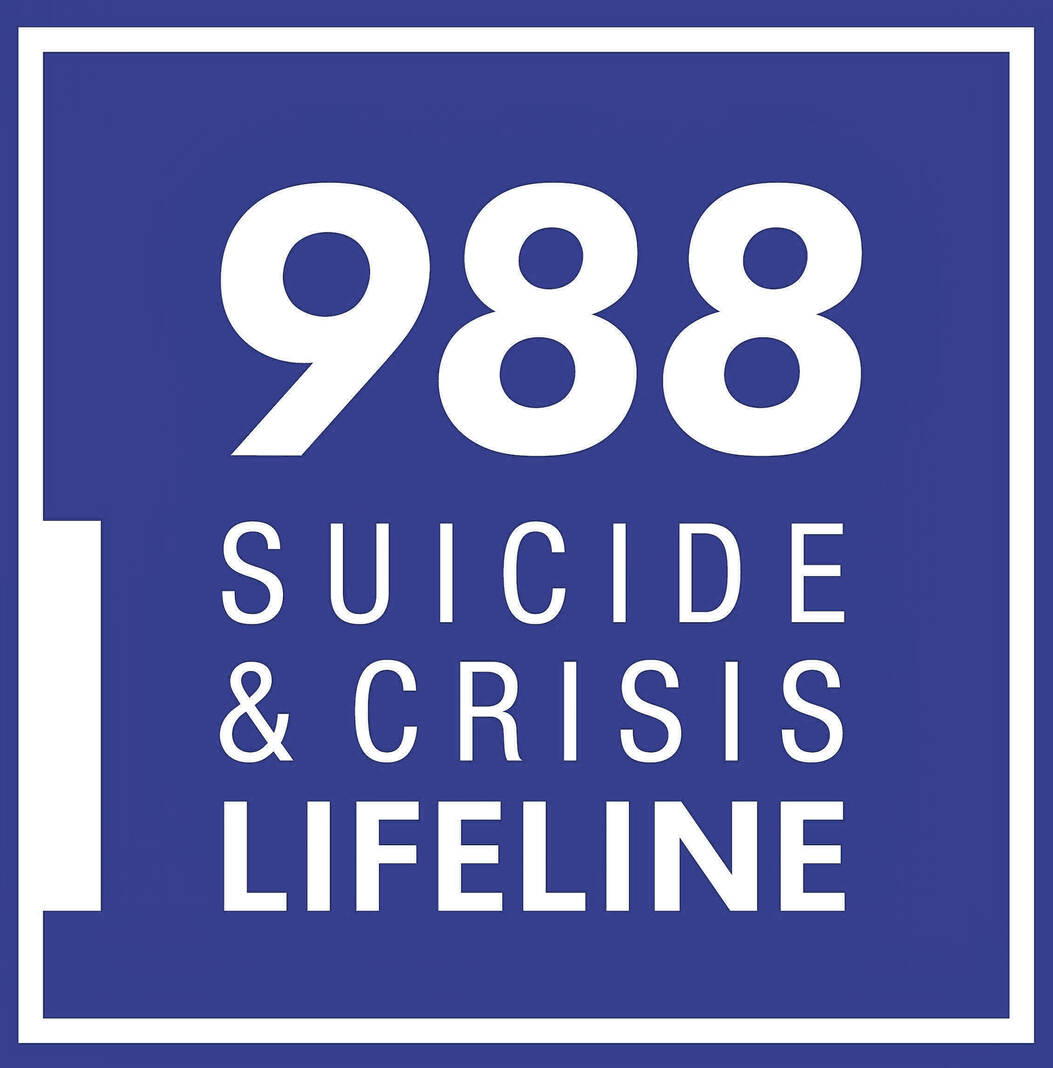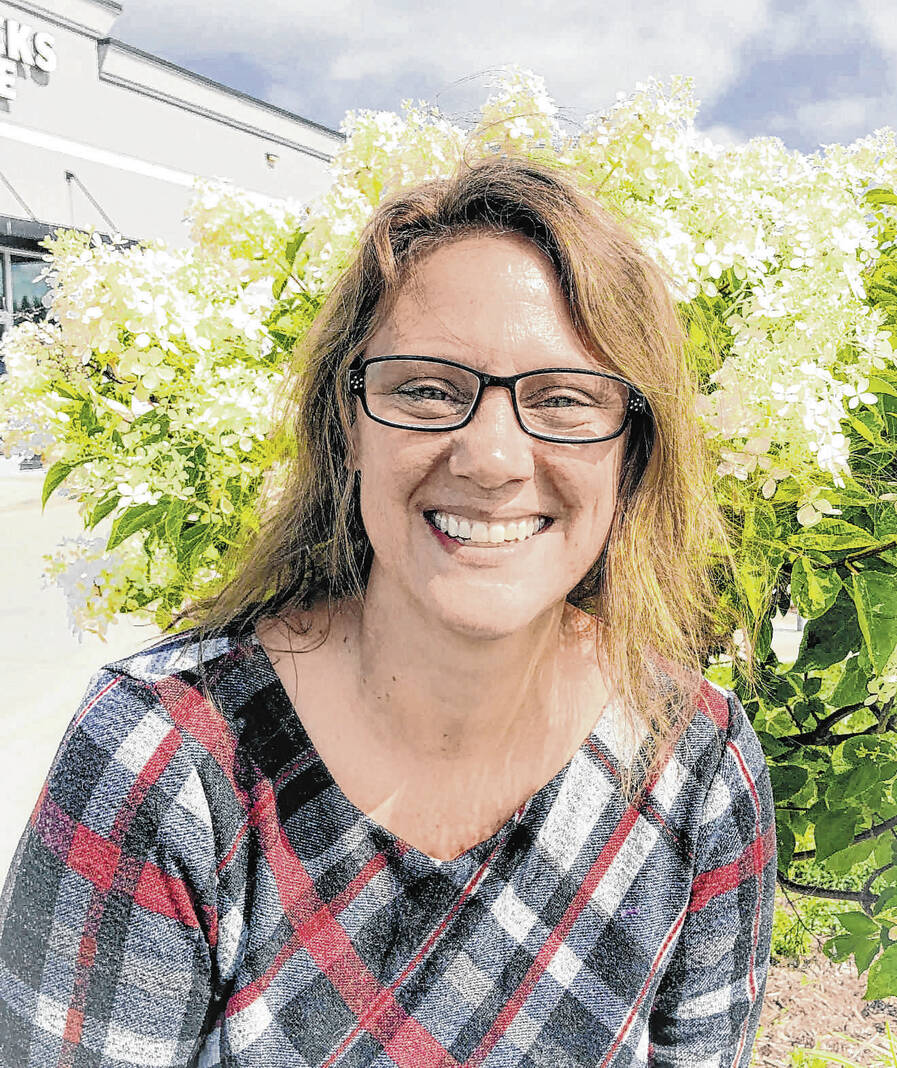

DuBois
September is National Suicide Prevention and Awareness Month, in which mental health advocates, prevention organizations, survivors, allies and community members unite to promote suicide prevention awareness.
On July 16, the United States transitioned from the 10-digit National Suicide Prevention Lifeline number 800-273-TALK to 988, an easy-to-remember three-digit number for 24/7 crisis care, according to the Substance Abuse and Mental Health Services Administration.
SAMHSA is the agency within the U.S. Department of Health and Human Services that leads public health efforts to advance the behavioral health of the nation. Its mission is to reduce the impact of substance abuse and mental illness on America’s communities.
The lifeline, which also links to the Veterans Crisis Line, follows a three-year joint effort by the U.S. Department of Health and Human Services, Federal Communications Commission and U.S. Department of Veterans Affairs to put crisis care more in reach for people in need.
When people call, text or chat 988, they will be connected to trained counselors who are part of the existing lifeline network. These trained counselors will listen, understand how their problems are affecting them, provide support and connect them to resources if necessary.
The previous number will always remain available to people in emotional distress or suicidal crisis.
In 2020, Congress designated the new 988 dialing code to be operated through the existing National Suicide Prevention Lifeline. Indiana introduced the bill in 2021, and the Department of Mental Health is helping to move forward with those call centers.
Catherine DuBois is a mental health counselor through the National Board for Certified Counselors and works at New Beginnings Recovery Center in Seymour.
She said it’s so important for people to know that what once was the suicide prevention number has been redesigned into a mental health crisis line.
“Children of today will grow up by dialing 911 when there’s an emergency, and now, people can dial 988 when it’s specific to mental health,” she said.
DuBois tells her patients they need not be suicidal to call, but they may be stuck in a spot and can’t stop crying or maybe some heavy things are going on and they’re feeling very low.
“This is a number you can call if you’re having concerns for someone and you’re there with them but not sure how to help them and it’s out of your league to handle the situation,” she said. “It’s a great number to call, and 988 is nationwide.”
DuBois said Indiana is starting its call centers, and it’s similar to when you call 911 and it’s routed to a local center. The calls currently go to satellites, and in the event 911 would need to be called, the 988 counselor could help facilitate that, as well.
“The biggest thing is knowing it’s available now, and it’s so easy to remember to call 988 for a mental health crisis,” she said. “Before, it was called the suicide hotline, and someone who was not suicidal wouldn’t want to call that number, but there could be a mental health crisis, so this lifeline (988) helps remove that stigma.”
Congress has provided the Department of Health and Human Services workforce funding through the American Rescue Plan and Bipartisan Safer Communities Act. Also, the president’s fiscal year 2022 budget request provides additional funding for the lifeline itself and for other existing federal crisis funding sources, according to samhsa.gov.
Anyone interested in becoming involved with suicide prevention or looking to connect to services may contact Christopher Drapeau, state suicide prevention director for Indiana, at [email protected].
DuBois recently attended a CAMS care training, funded by a grant from the Mental Health America Indiana Stanley W. DeKemper Training Institute.
CAMS stands for Collaborative Assessment and Management of Suicidality, and since she received the training, DuBois will have the opportunity to get certified in CAMS.
“Oftentimes when we talk about suicide awareness, we’re often on the side of prevention, so what happens, though, is when individuals go for treatment, suicide is often seen as a barrier to addressing treatment,” DuBois said. “The CAMS care model’s philosophy is you have to treat the drivers of suicide on its own and then you can treat something else.”
The driver of suicide is something in itself that needs treatment, and CAMS is a framework that very explicitly identifies what those drivers are to someone, whether a person is having suicidal thoughts or making suicidal plans.
“It creates a stabilization plan so the person can help build those skills, and when those thoughts come into play, they’ve built the skills to overcome them while treating those areas of concern and helping the person to get to a healthier state also,” DuBois said.
She said the isolation from COVID and the financial burden that came from it and also the loss and grief people were experiencing have been some of the drivers.
“Suicide is one of the leading causes of death in Indiana and second leading cause of individuals from ages 6 to 17 with heart disease and cancer being the next leading causes of death in Indiana,” she said. “Those two are genetic, but suicide is 100% preventable, and it takes a community to make it 100%, and it’s 100% possible to have zero suicides.”
In Jackson County, there were six suicides in 2020 and just three in 2019. But there were 10 in 2018 and 11 in 2017.
DuBois said there’s no evidence that talking about suicide or asking someone if they are having suicidal thoughts increases the chance of someone becoming suicidal.
“Instead, all of the evidence points to it decreasing the chance because it gives that person a way to express if they are having suicidal thoughts,” she said.
DuBois is a member of the ALIVE Coalition along with Becky Bujwid and Molly Marshall. The coalition was formed in the fall of 2018 under the umbrella of Mental Health America of Jackson County. ALIVE stands for awareness, listening, informative, vigilance and engaged.
“We’ll be putting signs up around town, and our focus is 988, which is the new thing, and again, it’s that whole concept that every kid knows 911, and now, everyone is going to know 988,” she said.
According to the National Institute of Mental Health, research shows that almost all deaths by suicide are preceded by warning signs of some sort, such as talking about wanting to die, great guilt or shame or being a burden to others. More signs are feeling hopeless, trapped, having no reason to live, extremely sad, anxious, agitated or unbearable emotional or physical pain.
Behavioral warning signs can be making a plan or researching ways to die, withdrawing from friends, saying goodbye, giving away important items or making a will, taking dangerous risks, extreme mood swings, eating or sleeping more or less and using drugs or alcohol more often.
#BeThe1To is the 988 Suicide & Crisis Lifeline’s message for National Suicide Prevention and Awareness Month and beyond, which helps spread the word about actions people can take to prevent suicide. The lifeline network and its partners are working to change the conversation from suicide to suicide prevention, to actions that can promote healing and help and give hope.
For information about the 988 lifeline and to learn ways to promote National Suicide Prevention and Awareness Month, visit 988lifeline.org.
The 988 lifeline has been designated as the new three-digit dialing code that will route callers to the National Suicide Prevention Lifeline, now known as the 988 Suicide & Crisis Lifeline and is now active across the United States.
When people call, text or chat 988, they will be connected to trained counselors who are part of the existing lifeline network. These trained counselors will listen, understand how their problems are affecting them, provide support and connect them to resources if necessary.
The previous lifeline phone number (800-273-8255) will always remain available to people in emotional distress or suicidal crisis.
